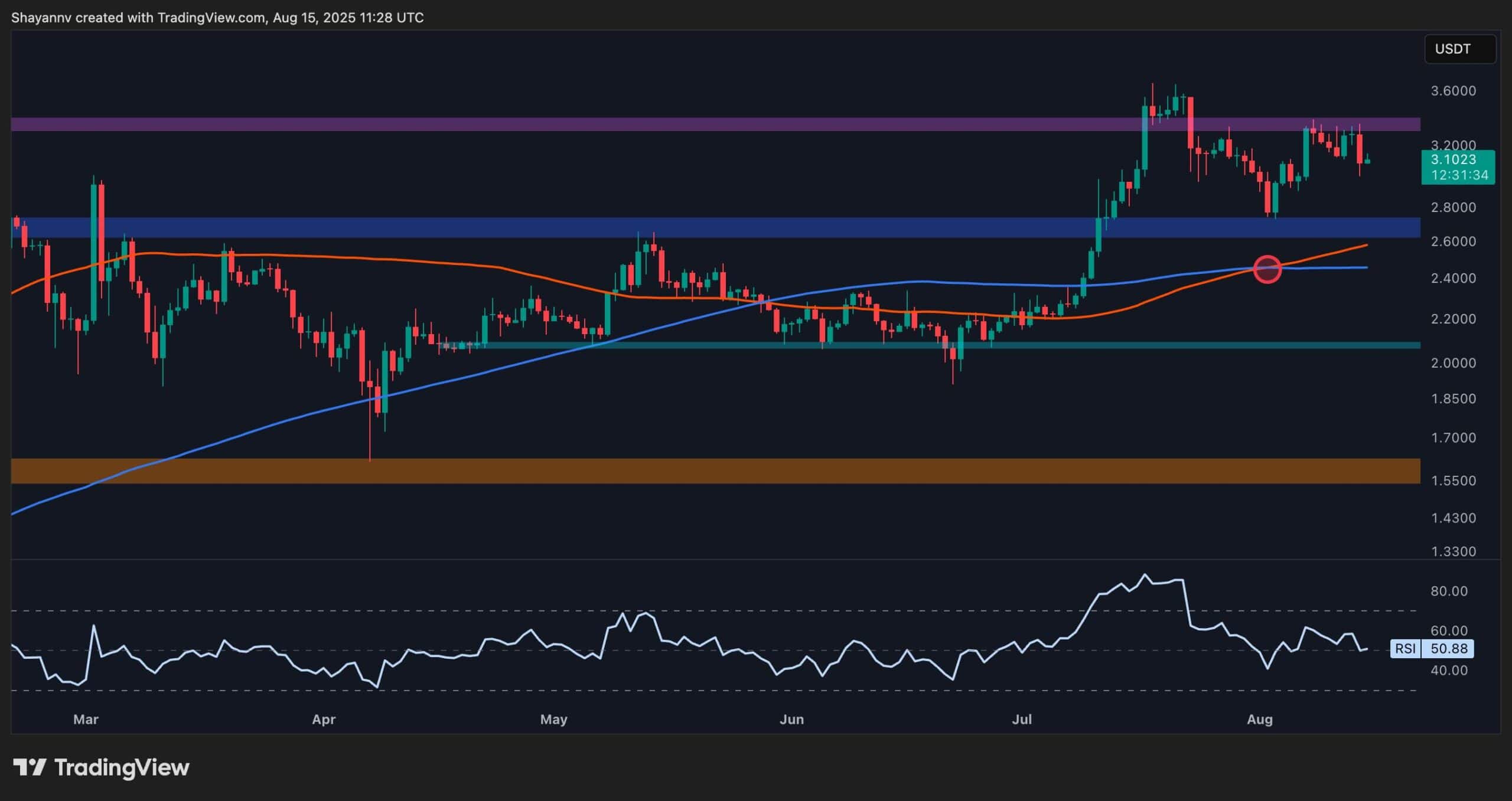Cryptocurrency
SEC lawsuits against Binance and Coinbase unify the crypto industry

Professionals across the crypto sector have responded to the United States Securities and Exchange Commission’s (SEC) recent actions against two of the biggest crypto exchanges, Binance and Coinbase.
On June 5, the SEC filed a lawsuit against Binance for allegedly offering unregistered securities. Only a day after filing the Binance suit, the commission also went after Coinbase on similar grounds, alleging that popular cryptocurrencies offered by the exchange, such as Solana, Polygon and The Sandbox, qualify as securities. reached out to market players working in the space for their responses to the recent actions by the SEC. From sharing a belief that it will drive crypto companies away from the U.S. to simply calling the SEC’s actions lazy, industry players shared their thoughts on the latest developments.
An ‘unacceptable’ approach to regulation
According to Kristin Smith, the CEO of the Blockchain Association, while the SEC’s actions are expected, it’s still unacceptable. Smith explained that:
“The SEC doesn’t make the law. Indeed, this approach to regulation is unacceptable, but it is what we have come to expect from the SEC and its anti-crypto stance.”
The executive highlighted that while the industry and the U.S. Congress are working to develop effective regulation, the SEC “continues to distract from substantive policy efforts.” The executive believes that by listing assets this way, the SEC is trying to circumvent formal rulemaking processes and deny public engagement.
Meanwhile, Paolo Ardoino, the chief technology officer of stablecoin issuer Tether, believes companies’ complaints against the SEC should be listened to. According to Ardoino, the uncertainty of rules and guidance in the U.S. is becoming a common theme, even among the country’s biggest crypto supporters.
Turbos Finance CEO Ted Shao also echoed Smith’s sentiment. Shao says this is “not the direction Web3 developers want to see.” The executive believes the SEC showed that it’s against the whole Web3 space, as they are also coming after top projects, not just centralized exchanges.
Driving crypto players abroad and weakening consumer confidence
In addition to the SEC’s actions being unacceptable, other professionals working in the space believe that the effects of this recent move include pushing crypto players to more crypto-friendly jurisdictions and weakening consumer confidence in crypto within the United States.
Insider Intelligence crypto analyst Will Paige said that the recent suits highlight the SEC’s intent to police the space through enforcement in the absence of a regulatory framework. According to Paige, this could potentially knock down the “already weak consumer confidence in cryptocurrencies” in the country.
Ben Caselin, the chief strategy officer at crypto exchange MaskEX, believes that while this is a case against Binance, it may have implications for other players in the United States. The former AAX executive explained that this can “open up more opportunities for other jurisdictions, such as Hong Kong, Dubai or even El Salvador, to drive innovation and attract capital and talent.”
Oscar Franklin Tan, the chief legal officer of nonfungible token protocol Enjin, agrees with the sentiment. According to Tan, the world will not wait for the U.S. to make up its mind on crypto. Tan explained:
“The SEC actions only drive talent and innovation out of the U.S. to countries with clearer rules that support responsible builders. Singapore, in 2020, stated it does not follow the U.S. Howey test. Japan has a clear self-regulatory framework for exchanges.”
The executive believes that “progressive countries” will reap the benefits, especially now that explosions in artificial intelligence and extended reality highlight the need for blockchain and genuine digital ownership.
Doubts cast on SEC’s fairness and motivations
While some expressed their beliefs on the potential effects of the SEC’s lawsuit against Binance and Coinbase, other crypto professionals explored the motivation and fairness of the SEC’s move.
According to David Schwed, the chief operating officer of Blockchain security firm Halborn, the SEC’s mandate is to ensure the safeguarding of investors. Schwed believes that this can be done through clear regulations, not through enforcement actions. The executive added that SEC Chair Gary Gensler’s motivations may be skewed. “It seems to me that his personal ambitions and the need to validate his stance have now superseded his core mandate,” he explained.
Alex Strześniewski, the founder of the decentralized finance protocol AngelBlock, described the SEC’s actions as “lazy.” The executive believes that it does not drive proper regulation forward. He explained:
“It’s like a school teacher berating you for giving the wrong answers but failing to give any explanation beyond that. I also don’t believe that the SEC does, in fact, have jurisdiction over everything they’re claiming to.”
Meanwhile, Tim Shan, the chief operating officer at decentralized exchange Dexalot, expressed mixed feelings about the lawsuits and said the SEC’s actions are unfair to the community.
“They’ve provided very little clarity or guidance to the crypto community. They are regulating through the courts, which is really quite unfair and not the right way to regulate/govern,” he said.
Impact on prices of crypto stocks and altcoins
Stephan Lutz, the CEO of crypto trading platform BitMEX, shared insights on the potential effects of the SEC’s crackdown on exchanges on the market. In the short-term, Lutz said that there would be a downside pressure on the prices of crypto stocks, altcoins and valuations of crypto startups based in the US. Lutz explained that:
“Investors are likely to keep funds in crypto but divest towards Bitcoin because these are unlikely deemed as a security, or stablecoins due to their correlation with fiat.”
In the medium and long-term, Lutz believes that exchanges will be cautious when dealing with customers based in the US and providing access to what the SEC is claiming to be securities. The executive also expressed frustration that regulators are “taking the issue of securities definition to the courthouse once again,” instead of offering clearer guidelines.
BitMEX has notably had its share of troubles with regulators in the US. In 2021, the trading platform agreed to pay up to $100 million to resolve a case with the Commodity Futures Trading Commission (CFTC) and the Financial Crimes Enforcement Network (FinCEN). In 2022, a New York court ordered BitMEX founders to pay $30 million in civil penalties.
Cryptocurrency
Ethereum Foundation, Whales, and Hackers: What’s Driving the ETH Sell-Off?

TL;DR
- Whales, hackers, and the Ethereum Foundation wallets moved over $500M in ETH through large sales and withdrawals.
- Ethereum transfers rose to 4.6M ETH, nearing the monthly high of 5.2M recorded in July.
- Staking inflows hit 247,900 ETH, the highest in a month, locking more supply from trading.
Large Withdrawals and Whale Activity
Ethereum (ETH) has seen heavy movement from major wallets over the past few days. On-chain data from Lookonchain shows a newly created wallet pulled 17,591 ETH, worth $81.62 million, from Kraken in just two hours.
Over three days, two new wallets withdrew a combined 71,025 ETH, valued at $330 million, from the exchange.
One of these wallets, address 0x2A92, has withdrawn 53,434 ETH, worth $242.34 million, in two days. This includes a recent purchase of 30,069 ETH, valued at $138.46 million, during a market drop.
Major ETH Holders Offload Millions Amid Price Rally
In contrast, several separate entities have been disposing of some ETH holdings. A wallet tied to a hacker address 0x17E0 sold 4,958 ETH for $22.13 million at $4,463, securing a profit of $9.75 million. Earlier this year, the same address sold 12,282 ETH at $1,932 and later bought back part of the amount at higher prices.
A different whale sold 20,600 ETH for $96.55 million over the past two days, generating a profit of more than $26 million after holding the position for nine months.
Meanwhile, an Ethereum Foundation-linked wallet, 0xF39d, sold 6,194 ETH worth $28.36 million in the last three days at an average price of $4,578.
Recent sales from the same wallet included an additional 1,100 ETH and 1,695 ETH for over $12.7 million combined.
The #EthereumFoundation-linked wallet(0xF39d) sold another 1,300 $ETH($5.87M) at $4,518 ~11 hours ago.
Over the past 3 days, this wallet has sold a total of 6,194 $ETH($28.36M) at an average price of $4,578.https://t.co/4hfCWymHVG pic.twitter.com/ErUyEY8SJy
— Lookonchain (@lookonchain) August 15, 2025
Network Activity on the Rise
CryptoQuant data shows Ethereum’s total tokens transferred have been climbing since August 9. After ranging between 1 million and 3 million ETH through late July and early August, transfers have risen to 4.6 million ETH, approaching the monthly high of 5.2 million recorded in mid-July. This increase has occurred alongside a price rally from about $3,400 to $4,600.
Interestingly, staking inflows generally stayed between 20,000 and 80,000 ETH per day over the past month. On August 14, inflows jumped to 247,900 ETH, the highest in the period.
At the time, ETH was trading near $4,600. Large staking deposits reduce the amount of ETH available for immediate trading, as staked coins are locked for a set period.
In the meantime, ETH trades at $4,647 with a 24-hour volume of $68.25 billion, down 2% on the day but up 19% over the week.
Binance Free $600 (CryptoPotato Exclusive): Use this link to register a new account and receive $600 exclusive welcome offer on Binance (full details).
LIMITED OFFER for CryptoPotato readers at Bybit: Use this link to register and open a $500 FREE position on any coin!
Cryptocurrency
Massive DOGE Whale Activity Hints at $1 Breakout

TL;DR
- Whales bought two billion DOGE this week, lifting their combined holdings to 27.6 billion coins.
- A single 900M DOGE transfer worth $208M to Binance drew attention to large exchange movements.
- DOGE broke key resistance, with momentum building for a possible push toward the $1 price mark.
Price and Market Moves
Dogecoin (DOGE) traded at $0.23 at press time, slipping 4% over the past day but still showing a 2% gain for the week. Daily turnover came in at about $6.18 billion.
Meanwhile, the broader crypto market saw over $1 billion in liquidations. Hotter-than-expected US Producer Price Index data pushed traders to scale back expectations of a near-term Federal Reserve rate cut. DOGE had roughly 290,500 coins liquidated during the sell-off.
On the two-week chart, analyst Trader Tardigrade notes that DOGE has cleared a downward-sloping resistance line after completing what appears to be a “wave V” in an Elliott Wave sequence. Similar setups in the past, where prolonged declines stayed within falling channels before breaking higher, have been followed by sharp rallies.
$Doge/2-week#Dogecoin is gaining strong momentum to surge above $1 pic.twitter.com/TuSEKr19nv
— Trader Tardigrade (@TATrader_Alan) August 15, 2025
Momentum gauges are also turning up. The Stochastic RSI, which had dropped into oversold territory, is now heading higher. Previous reversals from this zone have coincided with sustained upward moves. The current formation points to a possible run that could carry DOGE past the $1 mark.
Heavy Whale Buying and Large Transfers
As reported by CryptoPotato, blockchain data shows large investors have added two billion DOGE in the past week, spending just under $500 million. That brings their holdings to about 27.6 billion coins, or 18% of the supply. The buying streak has prompted speculation within the community.
Recently, Whale Alert flagged a 900 million DOGE transfer worth about $208 million into Binance. The tracking indicates that it originated from a wallet connected to the exchange, likely as an internal activity. The address involved holds 2.88 billion DOGE, one of the largest balances on the network.
Ali Martinez also reports that transactions above $1 million reached a one-month high, with activity building since early August and peaking as DOGE traded at $0.25.
Whales are back! Dogecoin $DOGE activity at a 1-month high. pic.twitter.com/C83Pv68mCt
— Ali (@ali_charts) August 14, 2025
Sentiment Building
Analyst Gordon described the current setup as “a nice bit of consolidation” before a potential breakout, adding,
“This will be one of the first coins normies FLOCK to & the pump will be MASSIVE.”
With whale accumulation rising, high-value transfers increasing, and a bullish technical pattern in play, DOGE is positioned for a potential push toward $1 if momentum holds.
Binance Free $600 (CryptoPotato Exclusive): Use this link to register a new account and receive $600 exclusive welcome offer on Binance (full details).
LIMITED OFFER for CryptoPotato readers at Bybit: Use this link to register and open a $500 FREE position on any coin!
Cryptocurrency
Ripple Price Analysis: XRP at Risk as Key Support Levels Could Trigger Sharp Drop

XRP has recently entered a consolidation phase after a strong rally earlier this summer, with the price action now hovering around key resistance levels on both its USDT and BTC pairs. Yet, while momentum has slowed, the charts still indicate a generally bullish structure, with multiple key support levels remaining firmly in place.
Technical Analysis
By ShayanMarkets
The USDT Pair
On the XRP/USDT daily chart, the price is currently trading near the $3.10 mark, facing a strong resistance zone around $3.40. This follows a breakout above the $2.70 range in July, which has now flipped into a support area.
Both the 100-day and 200-day moving averages are also trending upward and recently formed a bullish crossover around $2.45, reinforcing the medium-term bullish sentiment. If the $3.40 resistance breaks, a push toward the critical $4.00 range becomes likely.
However, the RSI hovering near the neutral 50 level suggests a lack of strong momentum for now, meaning a short-term pullback into the $2.80 support zone is still possible.
This zone will be key for maintaining the bullish structure. Losing it could open the door for a deeper correction toward the 200-day moving average located around the $2.40 mark. Yet, as long as the price stays above the moving averages, the broader trend remains bullish.
The BTC Pair
Looking at the XRP/BTC chart, the pair has recently pulled back after hitting the 3,000 SAT resistance, with the price currently around 2,600 SAT.
This follows a clean breakout above the long-term descending channel and a successful retest of its upper boundary, which coincided with the 200-day moving average and the 2,400 SAT support zone. This confluence remains a key bullish technical factor, as holding above it could attract renewed buying pressure.
That said, RSI levels around 48 show that momentum has cooled after the sharp July rally, meaning XRP may continue ranging between 2,400 SAT and 3,000 SAT in the near term. A decisive close above 3,000 SAT would likely open the path to the 3,400 SAT zone, while losing 2,400 SAT could shift the bias back toward 2,000 SAT support. For now, the structure still favors the bulls as long as higher lows remain intact.
Binance Free $600 (CryptoPotato Exclusive): Use this link to register a new account and receive $600 exclusive welcome offer on Binance (full details).
LIMITED OFFER for CryptoPotato readers at Bybit: Use this link to register and open a $500 FREE position on any coin!
Disclaimer: Information found on CryptoPotato is those of writers quoted. It does not represent the opinions of CryptoPotato on whether to buy, sell, or hold any investments. You are advised to conduct your own research before making any investment decisions. Use provided information at your own risk. See Disclaimer for more information.
Cryptocurrency charts by TradingView.

 Forex3 years ago
Forex3 years agoForex Today: the dollar is gaining strength amid gloomy sentiment at the start of the Fed’s week

 Forex3 years ago
Forex3 years agoUnbiased review of Pocket Option broker

 Forex3 years ago
Forex3 years agoDollar to pound sterling exchange rate today: Pound plummeted to its lowest since 1985

 Forex3 years ago
Forex3 years agoHow is the Australian dollar doing today?

 Cryptocurrency3 years ago
Cryptocurrency3 years agoWhat happened in the crypto market – current events today

 World3 years ago
World3 years agoWhy are modern video games an art form?

 Commodities3 years ago
Commodities3 years agoCopper continues to fall in price on expectations of lower demand in China

 Economy3 years ago
Economy3 years agoCrude oil tankers double in price due to EU anti-Russian sanctions

























